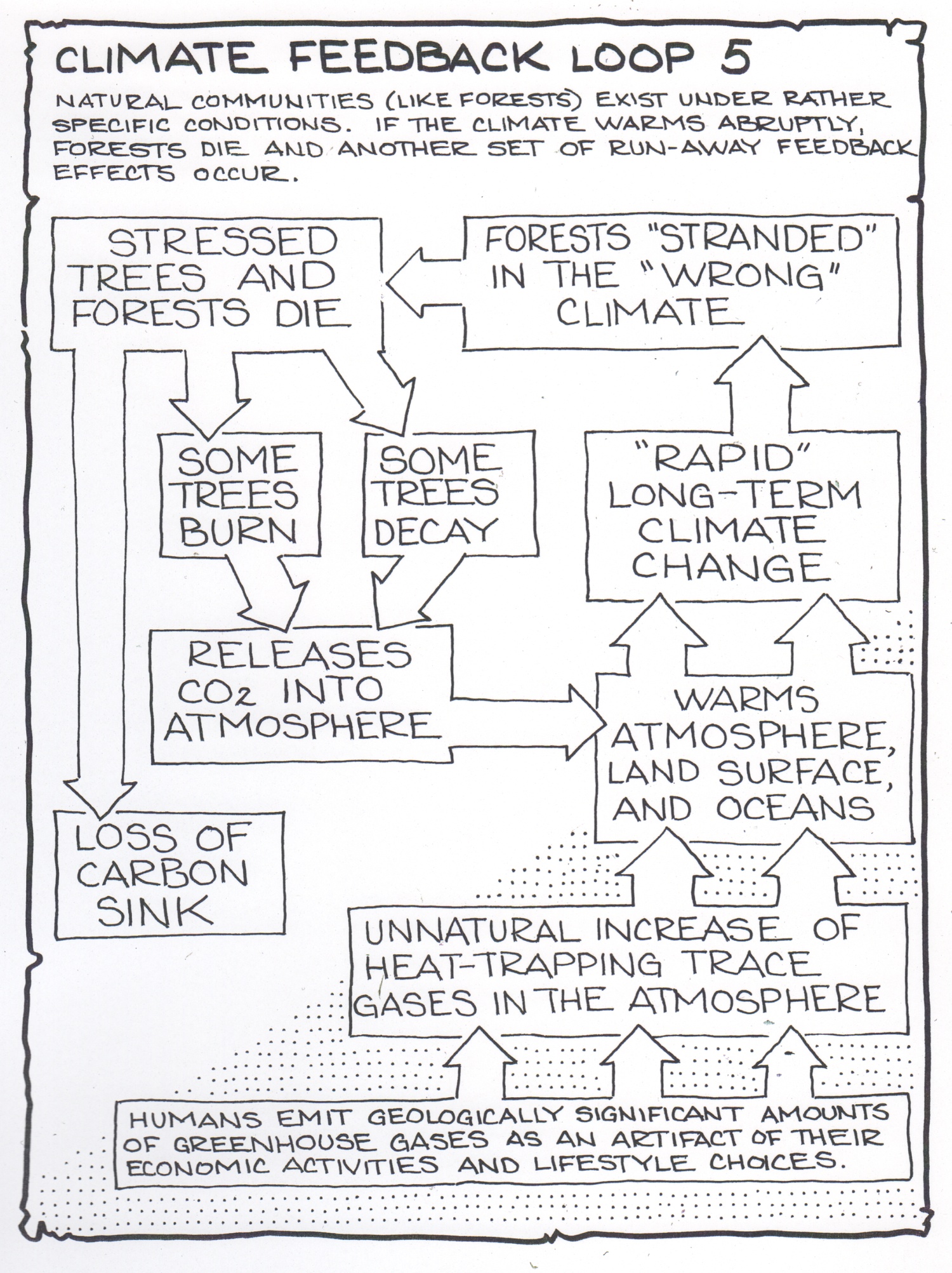The distribution of grasslands, forests, and deserts across the Earth's surface is the result of many variables, among which climate is a major determinate--especially mean annual temperature and mean annual precipitation.
Climate warming affects the world's vegetation.
As the Earth's average annual temperature trends upward under the influence of modern industrial human activity, vegetational communities like forests and grasslands find themselves, as climatologist Stephen Schneider explains, ' stranded in the wrong climate.'
Rapid climate change (i.e. over decades and centuries) provides stresses that overwhelm plants adapted to the previous 'normal' conditions. Many die. Dying forests present a double impact, as explained in the illustration below. One is that dead trees either burn (increased forest fires in a new drier climate) or if they don't burn, they decompose. In either case, the fast burn of fire or the slow burn of decomposition both release all of the carbon that had been stored in the trees themselves. The second impact is that regions that previously supported forests no longer have trees that serve as a carbon sink.
Logical action to minimize this climate feedback loop would involve eliminating carbon emissions (the source of carbon dioxide in the atmosphere) and planting trees where trees can grow (the sink for carbon dioxide in the atmosphere). Eliminate the source; re-establish the sink.
Climate Feedback Loop 5. © Fred Montague

